Between the entertainment, marketing and sharing advantages that it offers, we can all agree that YouTube is a fantastic service. But in today’s world it either takes a lot of bravery, a huge desire for attention or a lot of ignorance to post a video of yourself on YouTube.
Cyberbullying has highlighted something that we’ve all known for a long time: Not everyone on the Internet is nice. As an online community, YouTube is no exception to cyberbullying and Generation Y is no stranger to this reality. In fact, they know it better than their parents do. However, today’s youth may be more inclined to deal with those cyberbullies or overlook the risk entirely as they see avenues like YouTube as a way to seek social acceptance, take a stance on something they believe in or simply to vent.
With over a billion daily users, it’s important that your family knows the best ways to avoid and deal with cyberbullying on YouTube. Here are six good practices and solutions to keep in mind.
1. If your child is under 13 they shouldn’t have a YouTube account.
In compliance with a very important children’s privacy law, COPPA, users must be at least 13 years of age to register for a YouTube account. Signing up for an account when your child isn’t 13 puts their online privacy and safety immediately at risk. Your children and teens can still enjoy YouTube without being a member; just be sure to turn on YouTube Safety Mode.
2. Don’t use YouTube to let off steam.
There are better ways for your child to express their frustration than recording themselves and posting it on YouTube. Video blogging (vlogs) is something a lot of young people do on YouTube, and on a regular basis. After so many “successful” vlogs, it’s easy to gain some trust in the YouTube community and think that letting off a little steam might be greeted with community support, but that’s not always the case. All it really takes is an opinion that someone else doesn’t agree with and there’s a good chance rude comments will come flooding in.
3. Use YouTube’s privacy settings
The settings that YouTube makes available to their users are not only helpful, they’re comprehensive. You can prevent people from embedding your video on other websites by disabling video embedding, you can disable commenting, which is a huge cyberbullying-avoidance tool as most harassment on YouTube takes place right in the comments thread, and you can determine the overall visibility of your video by choosing from one of the three privacy settings:
- Public – Anyone can search for and view this video
- Unlisted – Only people with a link to your video can watch it
- Private – Only specific people you choose can view the video

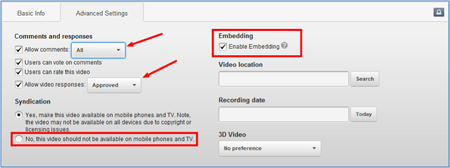
4. Never, ever respond to the bully
A response is the only thing they want out of your child, and if they give it to them, well, then, the bully has already won. Instead, take a screenshot the bully’s comment and then delete it. Then go to the bully’s YouTube channel, click on the drop down arrow next to their username in the right panel and select Block User. Blocking a user will stop them from making comments on your child’s videos or Channel, as well as stop them from being able to contact you through private messages.
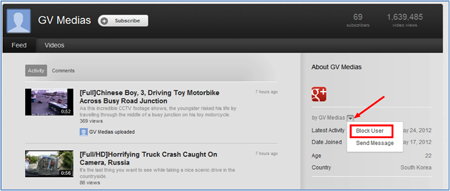
5. Use YouTube’s reporting tools
If, for a child, the cyberbullying has escalated to something worse such as video manipulation or unauthorized sharing of your video, it’s always best to tell a trusted adult so they can contact the website operators. That being said, YouTube’s reporting tools can prove to be very useful in cyberbullying situations that get out of hand.
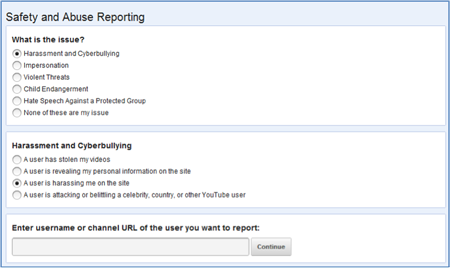
6. Never use personally identifiable information
Using personal information on any website is almost always a bad idea. Though YouTube only allows you to enter the city and country you live in, users can customize their “About this channel” section to say anything they want about themselves. YouTube also gives users the option to sync their Facebook, Twitter and Google+ profiles to their channel. If cyberbullying is something you or your child has dealt with on YouTube in the past, it’s best to stay away from this option as it only creates more opportunities for a bully to continue the harassment on those networks.
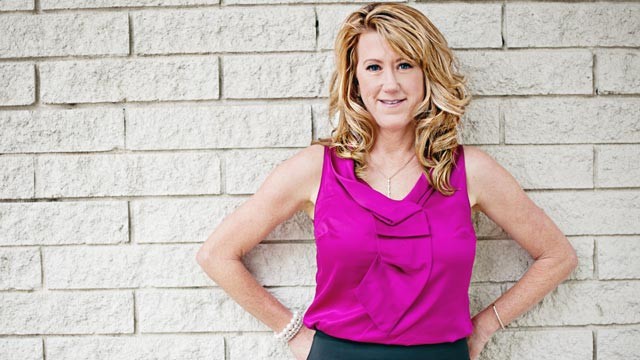 Mary Kay Hoal is a nationally recognized expert on children’s online safety. She is the founder and president of Yoursphere Media Inc., which focuses on the family and publishes the kids social network Yoursphere.com. Mary Kay also offers parents Internet-safety information and tips at YoursphereForParents.com. She has been profiled on CNN, Fox & Friends, FOX Business, E!, Lifetime TV, ABC News Now, and The Reader’s Digest. Mary Kay is also part of the “Web Avenger” team for ABC’s 20/20.
Mary Kay Hoal is a nationally recognized expert on children’s online safety. She is the founder and president of Yoursphere Media Inc., which focuses on the family and publishes the kids social network Yoursphere.com. Mary Kay also offers parents Internet-safety information and tips at YoursphereForParents.com. She has been profiled on CNN, Fox & Friends, FOX Business, E!, Lifetime TV, ABC News Now, and The Reader’s Digest. Mary Kay is also part of the “Web Avenger” team for ABC’s 20/20.
In 2012, Mary Kay founded The Yoursphere Media Foundation and Coalition for Internet Safety Education and Reform (FCISER), which is dedicated to creating a network of community educators that provide children, their parents, schools and communities, with the necessary skills, knowledge and tools they need to have a positive and safer digital experience.
Mary Kay has also been published on sites such as DrLaura.com, Yahoo! Shine and ABC News where she’s able to reach millions of parents. For more information visit www.marykayhoal.com.

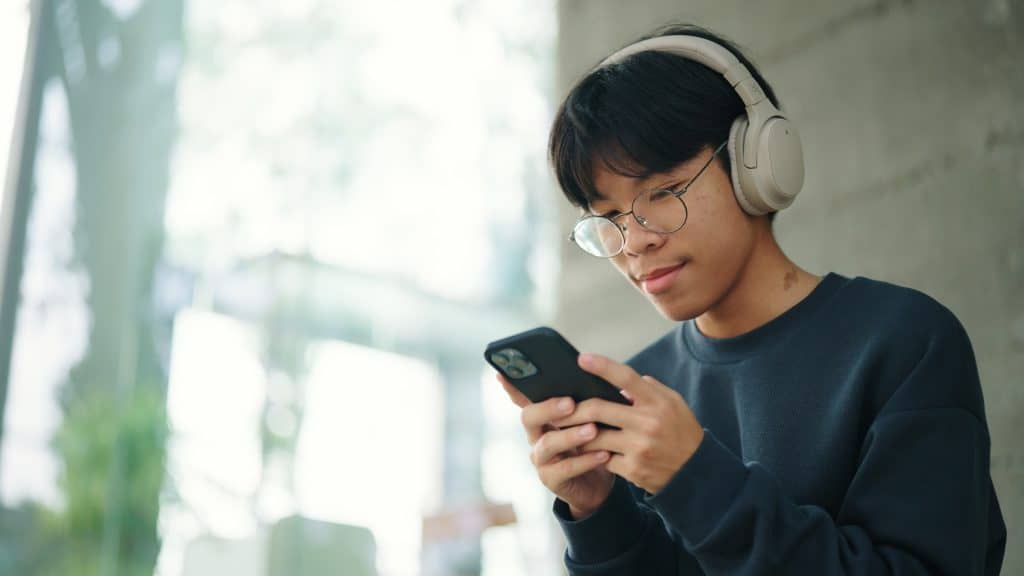
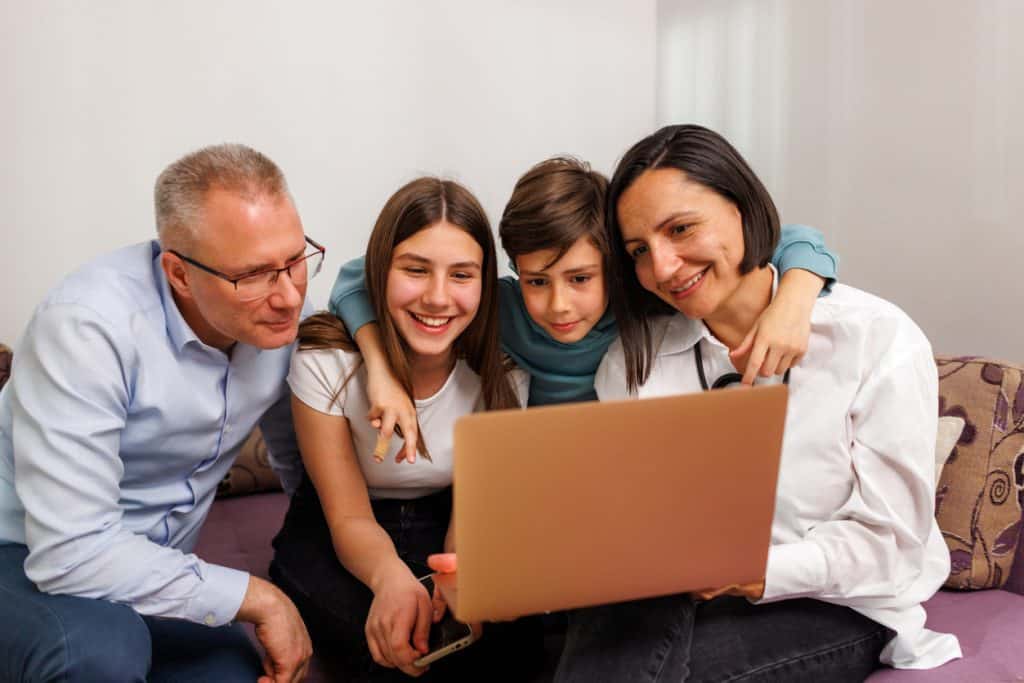
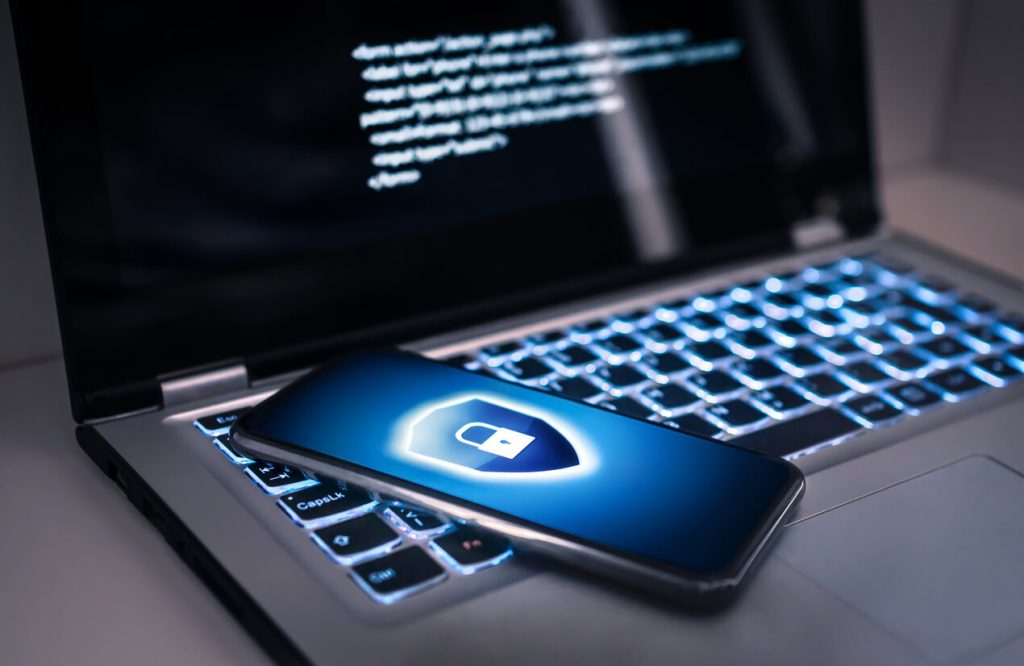
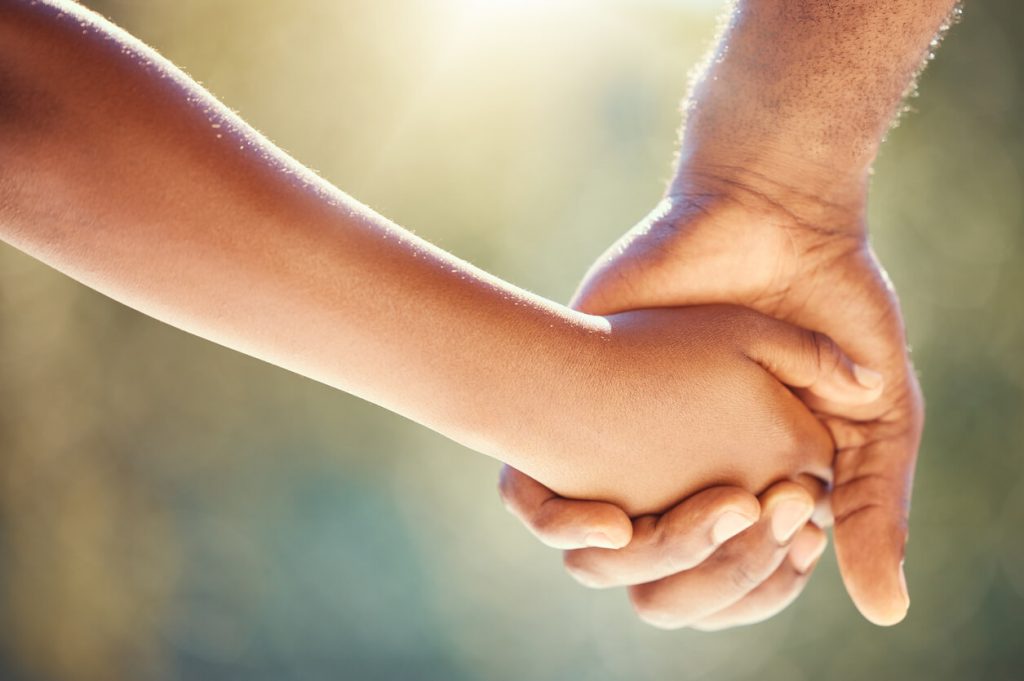

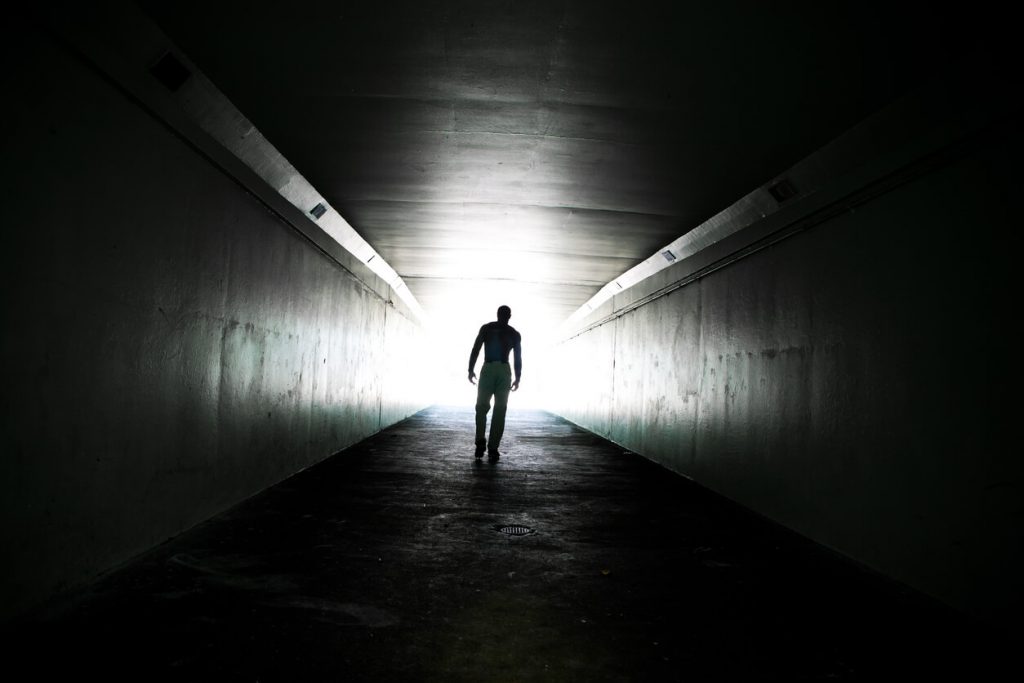
this information is wrong, when you block a user they can still do bad stuff, and reporting is ignored, and this year of cyberbullying on youtube was started by GOOGLE buying youtube.